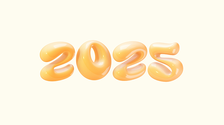Bonjour à tous. Today we're back with some very useful phrases that will help you to sound more French. In this article, we're going to learn how to avoid breaking up the flow of a conversation and about how to ask for more details.
Tu vois
Let's study our first expression: tu vois. Literally translated as "you see," tu vois is used in a way that is similar to English. That means that it will be super easy to remember!
We actually have two uses for this expression. The first one is as a question and it is used to clarify that the person you are talking to has understood your point.
Example:
- J'ai demandé à mon copain de faire le tri sélectif, comme ça on fait un geste quotidien pour la planète, tu vois ? (I asked my boyfriend to recycle so that we do something everyday to protect the planet, you see?)
You should know that since tu vois is in the question form in this example, you need to use an ascending tone. You should also know that using tu vois does not mean that we're expecting an answer like oui je comprends. Instead, it's primarily a way to get the attention of the person you're talking to.
The second use doesn't really have a meaning per se, and if you don't use it, it won't change the meaning of the sentence. However, it's useful for making your sentence flow smoothly and it is often used by French people to link two ideas and to make sure that the person you're talking to understands perfectly. The intonation is descending.
Example:
- J'ai une confession à faire. Tu vois, hier j'ai mangé trop de chocolat. (I have to confess something. You see, yesterday I ate too much chocolate).
Another example:
- Tu fais quoi devant la télé ? (What are you doing in front of the TV?)
- J'essaye de trouver de lancer un DVD, tu vois. (I'm trying to play a DVD, you see).
Tu vois ce que je veux dire
The second phrase « tu vois ce que je veux dire » is actually just a twist on the first one. It is used mostly in the same way as tu vois (with an ascending intonation) and is phrased as a question in order to check if the other person has understood your point. In English, it translates as "you know what I mean?"
Example:
- Je pense que c'est important de proteger la planete, tu vois ce que je veux dire ? (I think it's important to protect the Earth, you know what I mean?)
This expression is also used as a way of implying something negative without actually saying it. A common situation in which it is used is when you don't want to seem mean, so you just say this phrase and let the person interpret it for themselves. In this case, the intonation is descending.
Example:
- Ce week-end, je dois aller manger chez mes beaux-parents, tu vois ce que je veux dire. (This weekend, I have to have lunch with my parents-in-law, you know what I mean).
In this example, you are using the expression in order to imply that it's a hassle and you don't want to go.
You should keep in mind that even though « tu vois » can be used as a link between two ideas, you cannot use this second phrase in the same way. You can only use it at the end of a single sentence.
So, a sentence such as this would sound really weird and incorrect:
- Je vais faire les courses, tu vois ce que je veux dire, ensuite on ira au ciné. (I'm going to go grocery shopping, you know what I mean, then we'll go to the movies).
To sum up, both tu vois and tu vois ce que je veux dire can very naturally replace "do you understand?" when you're trying to assess whether the person you are talking to has understood your point. It’s important to know that they are much better than tu comprends, which is a bit too harsh and direct to use in normal conversation. Not only that, but tu comprends could cause the other person to react with thoughts like: "of course I understand, do you think I'm stupid or what." You should of course try to avoid this. On the other hand, tu vois and tu vois ce que je veux dire are soft and make you sound more like a French person.
C'est-à-dire
Our last phrase for today is c'est-à-dire. This very useful expression translates to "that is to say" in English. You can use it both as a question and as a statement to explain and give more details.
When you don't really understand something, saying je ne comprends pas (I don't understand) will immediately stop the flow of the conversation and make you feel uncomfortable and a bit paralyzed. To avoid this, use c'est-à-dire in an ascending intonation. This is like asking the person to explain what was just said in a more detailed way.
Example:
- Est-ce que tu as vu Julien ce week-end? (Have you seen Julien this weekend?)
- C'est-à-dire ? (What do you mean?)
- Julien devait aller au cinéma avec vous, est-ce qu'il est venu ? (Julien was supposed to go with you to the movies, did he come?)
You can also use c'est-à-dire yourself as a way to give more details and explain what you want to say more thoroughly. It is said using a descending intonation.
Example:
- Je dois voir ma mère ce soir, c'est-à-dire je pourrais pas te téléphoner. (I have to see my mother tonight, which means I won't be able to give you a call).
There are of course other ways to maintain flow in a conversation, such as tu peux répéter or tu peux parler plus lentement s'il te plaît, but c'est-à-dire is a great expression if you want the other person to repeat or explain something in a different way. Saying je ne comprends pas will usually result in the other person dropping the conversation topic and changing subject, which isn't really what you want. Je ne comprends pas can also make the other person feel as though they’re not explaining themselves very clearly and again, as with tu comprends, we need a softer way so as to not create an uncomfortable atmosphere.
So, the next time you see your tutor or your French teacher, don't hesitate to try out your new French phrases, and tell me how it went! If you have questions, the comment section is all yours. I'll be there to help you.
In the meantime, for more real French, you can find me on Twitter at @French_Blabla or on my blog at frenchteachercaro.wordpress.com, where I can help you speak like a native.
A très vite !
Caroline
Image Sources







